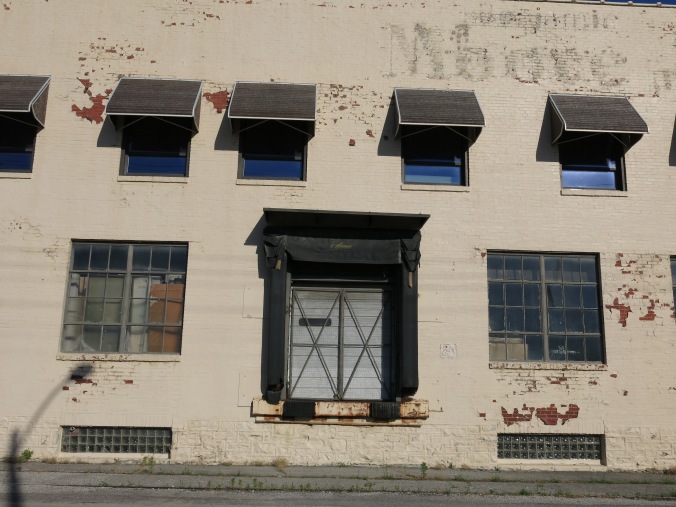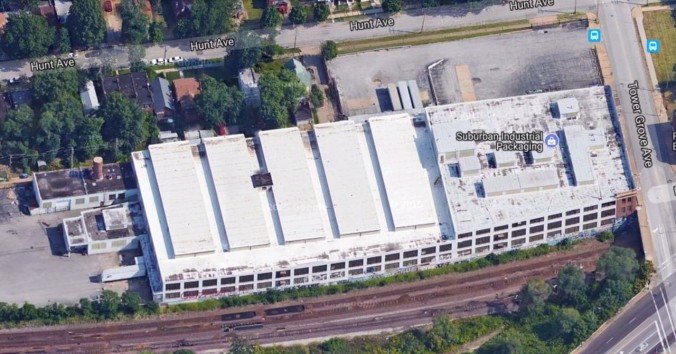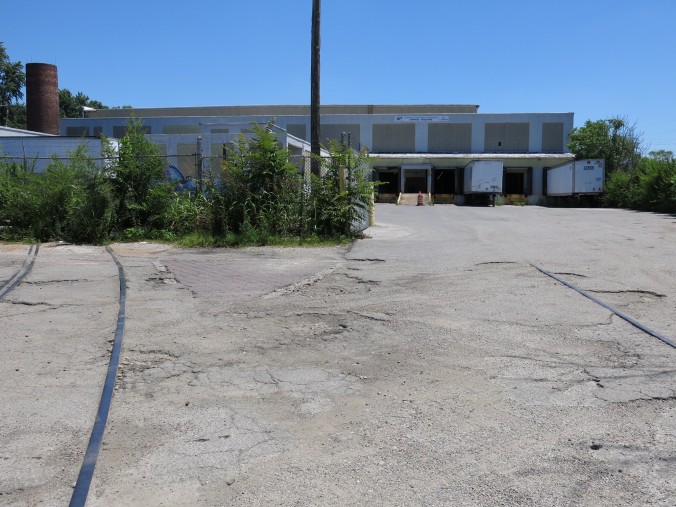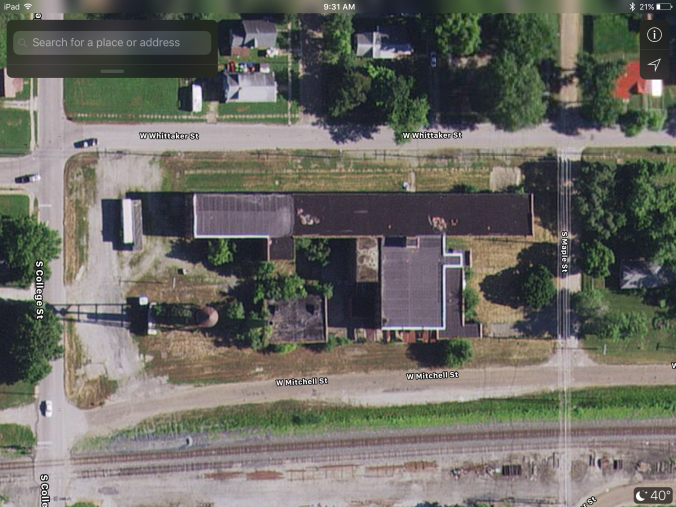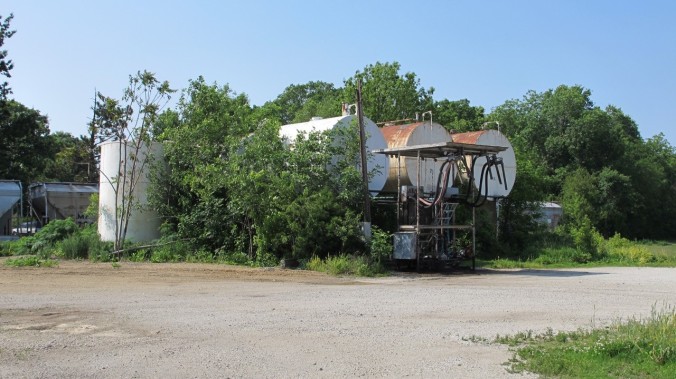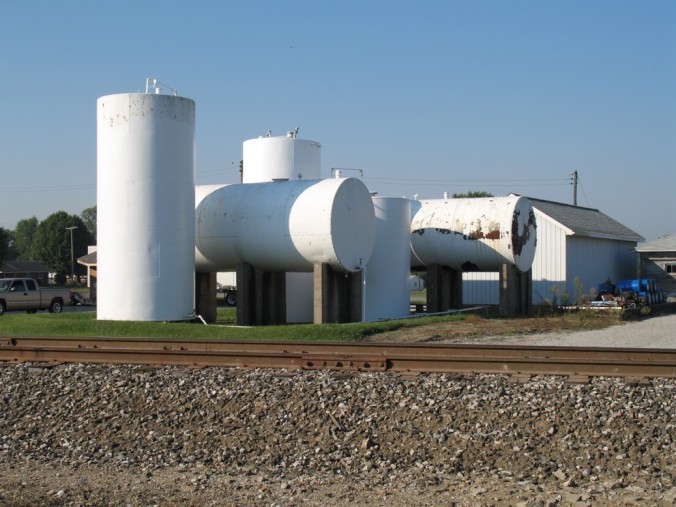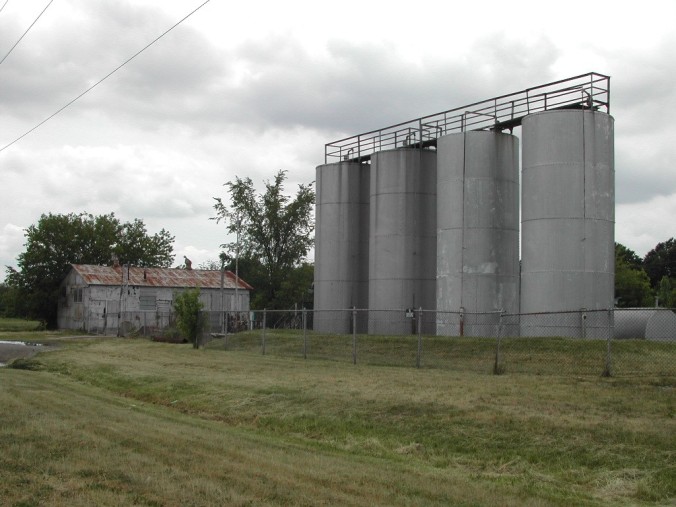
Back in March, 2020, when all the COVID lockdowns began and train shows and RPM meets were all cancelled for the year, my friend Ron Christiansen built a private e-mail list of about 50 guys to talk trains. He called it Ron’s Train Club. Ron usually picked a subject and we talked about it for a few days, and then moved on to whatever Ron wanted to talk about next. Ron also began hosting a weekly “Ron’s Train Club” Zoom call. Anyway the new list took off, and it is still very active with hundreds of e-mails exchanged weekly.
One of the more prolific posters on Ron’s Train Club is Dave Nelson, a lifelong railfan and model railroader. Dave sends photo essays to the group every week or two. His e-mails usually include about 20 photos, lots of history, and some interesting stories. They are terrific and I’ve saved quite a few of them.
A few months ago Dave sent a photo essay to Ron’s group on the former Standard Oil terminal in Galesburg, Illinois, which was once rail-served by the CB&Q. Dave allowed me to use e-mail and photos, which are reproduced here in their entirety. I hope you enjoy this post, courtesy of Dave Nelson. All photos, unless noted, are credited to David Nelson and Roger Worchel. Here’s Dave:
During last night’s excellent Zoom tour of Jared’s Alma Branch layout, Jared mentioned a common Standard Oil design for bulk oil dealer offices–a small, square, hip-roofed wood structure.
Below. This is a typical Standard Oil “jobber” as mentioned by Dave. This example was in Ackley, Iowa. Doug Harding photo.

On my layout the Standard Oil bulk dealer has a more substantial structure made of brick. A friend who is slightly older said my bulk oil depot looked rather similar to a brick bulk oil dealer in Galesburg Illinois, on the former Burlington. After a little bit of online map study, I decided to do a bit of harmless trespassing and document the structure in Galesburg. Here’s the image from Google, below. The bulk oil dealer is at the center, and you can see the BNSF main tracks at the lower right.

Galesburg was something of a central hub for the CB&Q, and then again for the Burlington Northern RR, as the line that came down from Chicago split at Galesburg, going too Burlington, Iowa (and beyond…to Denver and down to Texas), and Quincy, Illinois before crossing the Mississippi River and heading south to St. Louis and also heading west. Moreover there were lines emanating from Galesburg to Peoria and Minneapolis. The Santa Fe also went through Galesburg and the two railroads were connected by a rather rickety interchange downtown.
Back to Herr Oil in Galesburg. My friend Roger Worchel and I were taking pictures of the street side of the structure when a guy came running towards us. I thought we were about to get yelled at but instead he wanted us to come inside to look around the interior, and see his truck.
Well, he didn’t have to twist my arm. Oddly enough, on that same trip to Galesburg, Roger and I were taking photos of the preserved CB&Q roundhouse in nearby Beardstown when the owner came out (and again, I thought we were going to get a tongue lashing) and said “The best pictures can be taken over here, and come inside when you’re done and take a look at the interior”. I never pass up a chance to photograph a roundhouse. But that is a Train Club for another day; for now let’s focus on Herr Oil in Galesburg.
Herr Oil is not a museum nor is it re-purposed. It was a bulk oil dealer 70+ years ago and it still is today. But no longer rail served, alas.
First we’ll look at the exterior. Then we’ll go inside. But before we do either, I took photos of a large old photo he had on on top of a file cabinet, a wide photo that showed that yes this HAD been a Standard Oil depot originally. That was a great find! My friend’s hunch about architectural style was correct, although the building has been changed and added on to since, I suspect many times. It is Mobil now. Fortunately the owner allowed me to remove the fragile old photo and place it where I could take my photos of the photo without glare.

Note the railcars in the background. That is the old CB&Q yard in Galesburg. The view faces east, and it is the east face of this structure (the other side from this photo of the west face) that would have been rail served, and the rail served part was essentially an upper floor. What we’re seeing in the photo is the “customer side” of the building. Here’s the ground level today:

Now we are going to walk up the hill towards the tracks and see the east face, the rail served side. This is a photo I had taken years earlier just rather casually documenting, not aware that I needed to observe things to model for my own layout.
 Note the long low building, which is the part of the building that actually serves the other side, the customer side. That loading dock suggests perhaps boxcars delivering drums of petroleum products, or boxes of paraffin. Yes, that’s a freight elevator room on the top.
Note the long low building, which is the part of the building that actually serves the other side, the customer side. That loading dock suggests perhaps boxcars delivering drums of petroleum products, or boxes of paraffin. Yes, that’s a freight elevator room on the top.

Here are a couple more photos from 2019. The building is still in good shape.

On the south end, there are plenty of old oil tanks, all of which are still in use. The area in the foreground used to be full of tracks.

Here are some interior and detail shots of the Herr Petroleum facility. Here are fuel lines entering the building, and fuel pumps. I suspect this interior view of the garage has not changed much since the 1950s.

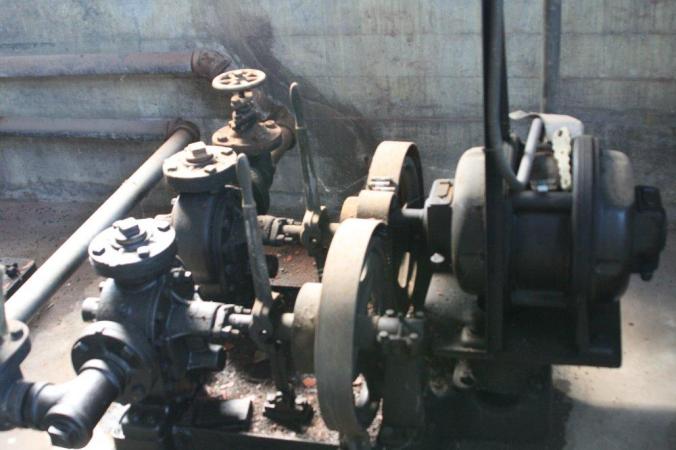
Interestingly there are also interior tanks. They were impossible to photograph, but they’re in there!

Below. These are ancient paint templates. There were many of them all over the walls.


There was also graffiti from old employees.

I can tell you that there are many things of interest in this sprawling old structure, and the owner is maybe most proud of this. The fuel tank on the truck has a builder’s plate from Morrison Brothers Co. of Dubuque, Iowa. Morrison Brothers is still in business and has been for about 150 years.

Below. The garage is clean–looks like a typical HO scale scene. The ceiling is exceptionally clean.

Outside, on the north end, there are more tanks of various sizes.
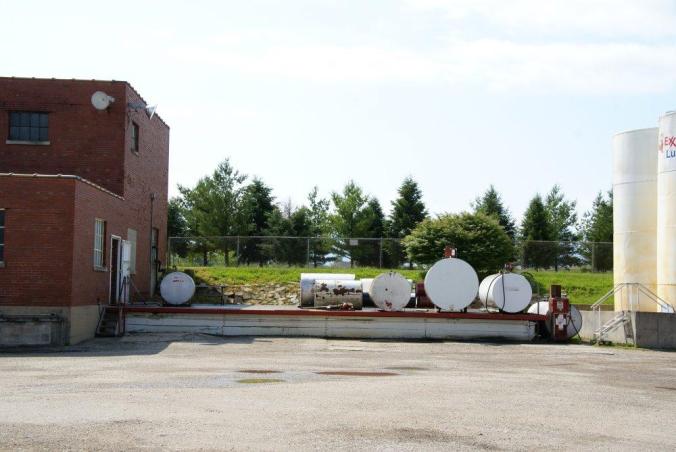
The old tradition of “branding” the tanks at a bulk oil depot is not dead. Put a tiger in your tank!

Thanks Dave for an interesting and informative essay!
A postscript to Dave’s essay: Standard Oil had a large, brick structure in Mason City, Iowa, as well, along the north side of the Milwaukee Road Yard there. Here is a Sanborn view, below. Standard Oil was the area between the two Mason City Transfer & Storage Co. buildings.

Here are a few aerial views from the Clark Propst collection. The first view, below, is from 1941.

Below. This view is from 1952. Not too much has changed. A few large brick structures, tanks of all sizes and types, and rail service.

Thanks Dave, for putting this post together and allowing me to use it on the RPM blog! – John G
















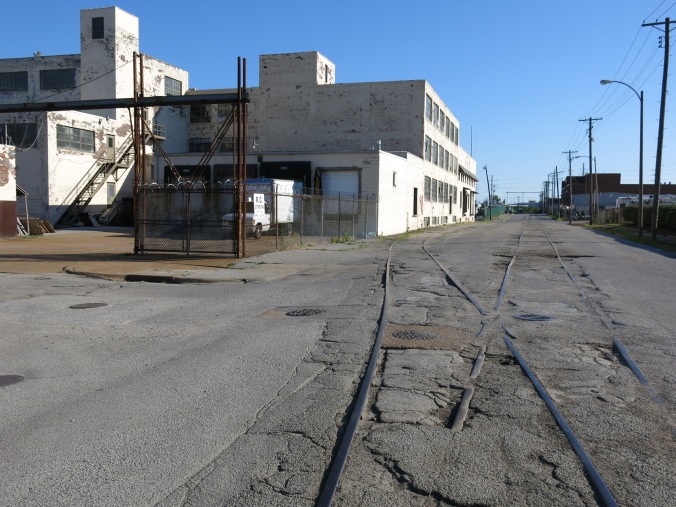 Above. Another view down 2nd Street, showing the turnout off the Manufacturer’s Railway. Below is a Google Earth view of the plant, showing how it consumes much of the city block. The Monsanto plant was behind this building and to the right.
Above. Another view down 2nd Street, showing the turnout off the Manufacturer’s Railway. Below is a Google Earth view of the plant, showing how it consumes much of the city block. The Monsanto plant was behind this building and to the right.





